In a livestock show, each animal is looked at by a judge, who ultimately chooses their top animals. But not every animal can be a show animal. Commercial animals are raised for the products they provide, such as meat, milk, eggs, and fiber. Show animals, on the other hand, produce the same things, but their main goal is to place highly in shows.
Let’s dive into some of the differences between show animals and commercial animals.
Beef
Beef heifers and steers are judged on their structural correctness, balance, degree of muscling, movement, volume and more. Market animals are also judged on their degree of fat cover, growth capacity, and frame size, while heifers are also judged on femininity and style.
While the structure that show animals are bred and selected for should represent the structure of sound market and breeding animals in commercial production, show livestock is heavily pampered, fed, groomed, and hair even grown to help them look the part.
Meanwhile, commercial cattle’s number one priority is that they’re sound, productive, and fit the environment that they’re being raised in while producing quality beef or calves. How they look ranks much lower on the priority list.
While show animals usually aren’t judged by the quality of their carcass, commercial cattle will certainly be USDA-graded, and that grade can and will affect the marketability of that producer’s cattle. In market animals, producers will be looking for quality marbling. With commercial animals, the emphasis isn’t on how good that individual animal looks, it’s more about the quality of genetics and practical use of the animal.
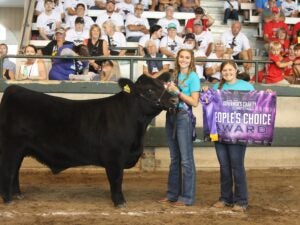
Dairy
Dairy judges are looking for feminine and balanced animals that move well, have a straight topline (back), have good feet and legs, and, most importantly, have a balanced, strong, and uniform udder. While commercial producers look for similar things, they may place a larger emphasis on feet and legs, longevity, fertility, production, and health.
Genetics are another big part of how farmers determine what cows they want in their herd and what bulls to breed their animals to. Just like with beef animals, femininity doesn’t place quite as high on the list of qualities farmers select for, as long as they are producing good calves and enough milk.
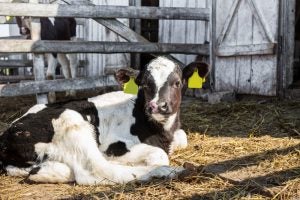
Swine
When judging pigs, judges will look for width, a flat back, muscling, large frame size, good bone structure, volume, and degree of leanness (amount of fat), among other things. When looking at breeding gilts, judges will also look for maternal traits, soundness and structure, muscling, and frame size.
Commercial producers will also look at genetics, rate of gain (weight), feed efficiency, and other production factors. Obviously, farmers look at structure, muscling, leanness, and frame size, but volume, flat backs, and width aren’t as important for commercial pigs as they are for show pigs.
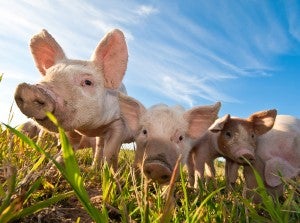
Sheep
Sheep are similar to other livestock species. When showing, judges will look for muscling, frame size, balance, structural correctness, soundness, and degree of finish (at the time of the show) in market lambs. In breeding ewes, judges will look for those traits as well as overall style, degree of leanness, and wool.
A commercial farmer will look at structure, frame size, soundness, and wool. They will also make sure they select animals that are healthy, produce lambs at regular intervals, perform well on pasture, and genetics. Farmers will look for market animals have a good loin eye size and proper back fat thickness, which would indicate quality meat.
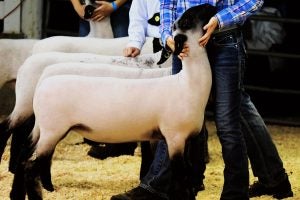
Meat goats
Goats are very similar to sheep in a show sense. Judges will look for muscling, soundness, structural correctness, volume, balance, style, and more. Farmers will look for similar traits when raising goats for market. When selecting breeding does, farmers will look at genetics, for goats with multiple births (twins and triplets), goats that produce kids (baby goats) that grow quickly, and good overall confirmation. Farmers will also look for goats that are healthy and fertile.
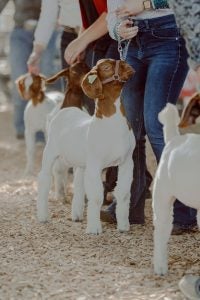
Dairy goats
Dairy goats are judged more like dairy cattle than other goats. Judges look at body capacity, structural correctness, mammary strength, feet and legs, dairy strength, and more. Commercial producers will also look at these things but, like dairy cows, mainly want goats that produce good offspring, are healthy, sound, and have good milk production.
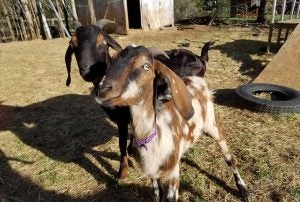
One final thing to know is that judges across all species look at each breed of animal, too. Even across beef cattle, breed characteristics vary, and the judge can be looking for different things based on what breed that animal is. Breed characteristics is yet another factor that both judges and farmers have to think of when selecting an animal.
At the end of the day, the main difference between show animals and commercial animals is the emphasis that’s placed on the look of show animals. While those traits are meant to model form and function in market animals, commercial animals purpose, functionality, and genetics reflect that and bear a much higher priority.
Next time you see animals on a farm and then animals at a livestock show or fair, take a look at just how different they can be.
Michelle Miller, the “Farm Babe,” is an internationally recognized keynote speaker, writer, and social media influencer and travels full time to advocate for agriculture. She comes from an Iowa-based row crop and livestock farming background and now resides on a timber farm in North Central Florida.



